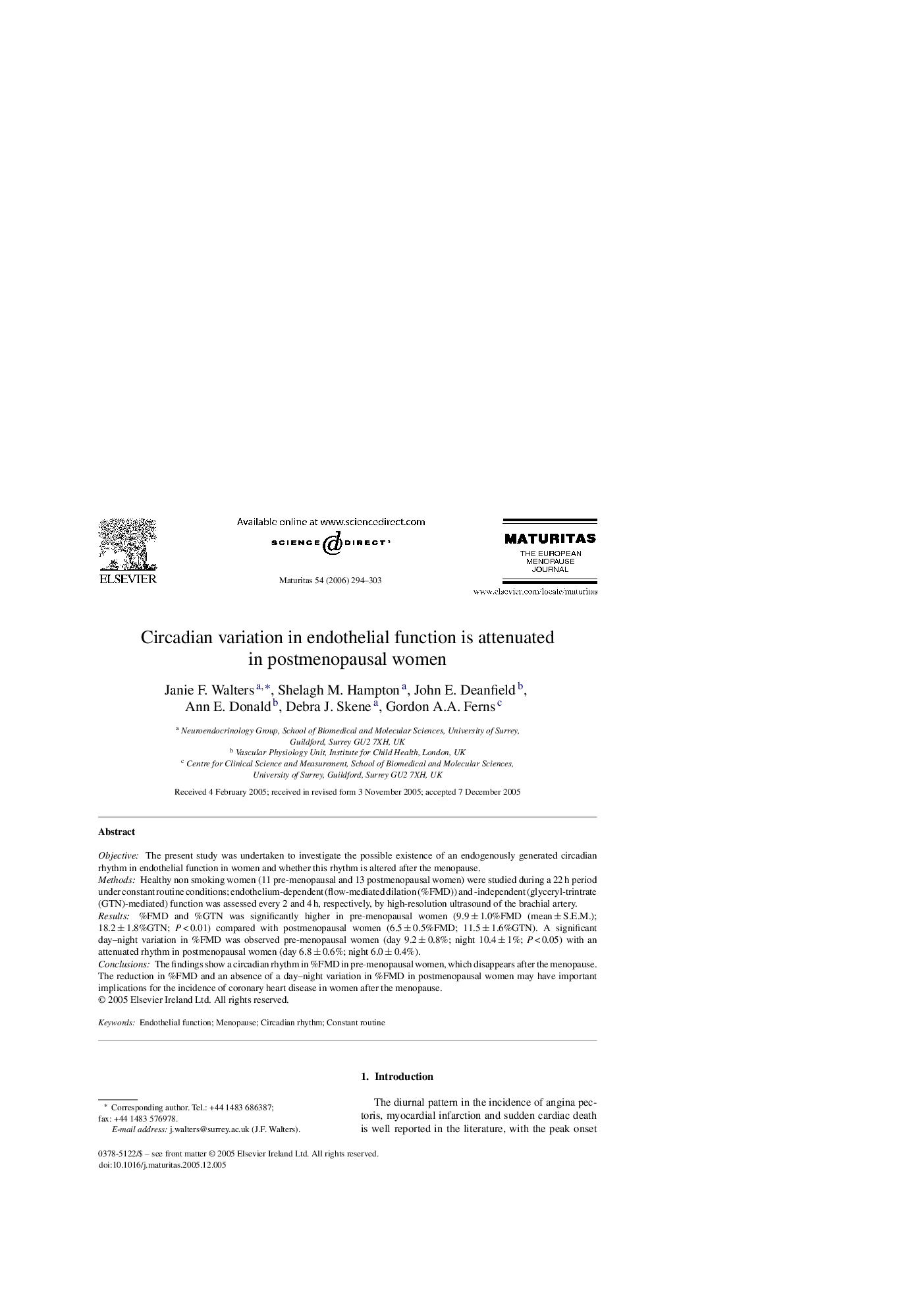| Article ID | Journal | Published Year | Pages | File Type |
|---|---|---|---|---|
| 1918779 | Maturitas | 2006 | 10 Pages |
ObjectiveThe present study was undertaken to investigate the possible existence of an endogenously generated circadian rhythm in endothelial function in women and whether this rhythm is altered after the menopause.MethodsHealthy non smoking women (11 pre-menopausal and 13 postmenopausal women) were studied during a 22 h period under constant routine conditions; endothelium-dependent (flow-mediated dilation (%FMD)) and -independent (glyceryl-trintrate (GTN)-mediated) function was assessed every 2 and 4 h, respectively, by high-resolution ultrasound of the brachial artery.Results%FMD and %GTN was significantly higher in pre-menopausal women (9.9 ± 1.0%FMD (mean ± S.E.M.); 18.2 ± 1.8%GTN; P < 0.01) compared with postmenopausal women (6.5 ± 0.5%FMD; 11.5 ± 1.6%GTN). A significant day–night variation in %FMD was observed pre-menopausal women (day 9.2 ± 0.8%; night 10.4 ± 1%; P < 0.05) with an attenuated rhythm in postmenopausal women (day 6.8 ± 0.6%; night 6.0 ± 0.4%).ConclusionsThe findings show a circadian rhythm in %FMD in pre-menopausal women, which disappears after the menopause. The reduction in %FMD and an absence of a day–night variation in %FMD in postmenopausal women may have important implications for the incidence of coronary heart disease in women after the menopause.
